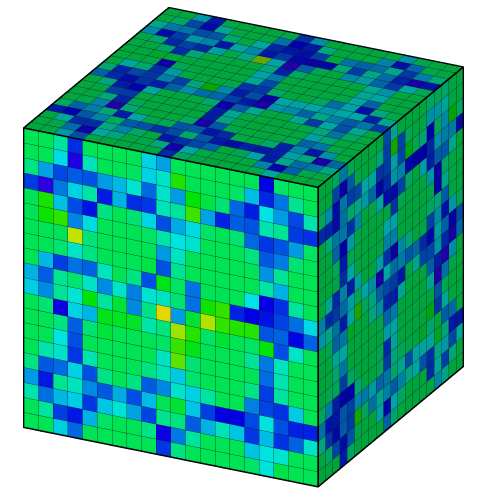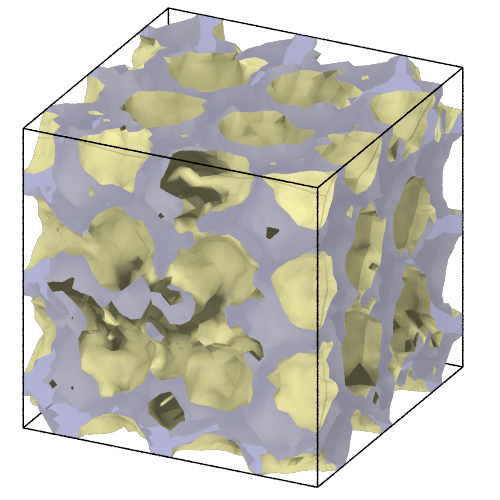Voxel grids¶

A voxel grid is a data object storing a structured grid of uniform cells, each associated with one or more numeric values. A voxel grid is typically used for the discretized representation of a field quantity.
Voxel grids can be imported into OVITO from simulation data files, for example charge density fields output by DFT simulation codes. See the list of supported input formats of OVITO. Additionally, voxel grids can be dynamically generated within OVITO, for example using the Spatial binning modifier, which maps per-particle quantities onto the voxel cells of a structured grid.
Similar to particles, the cells of a voxel grid may be associated with an arbitrary number of properties.
A property can be a scalar field value, e.g. the local charge density, or a more complex vectorial quantity such as the magnetic moment
vector. The special property Color determines the rendering color of each individual grid cell.
You can set it with the Color coding modifier, for example.
Additional properties may be assigned to the cells of a voxel grid using the Compute property modifier
of OVITO.

There are different ways to visualize a voxel grid in OVITO. The Voxel grid visual element is the default representation automatically generated by the data pipeline, which renders only the outer surfaces of the grid (see first picture). Thus, it will only visualize the field values on the boundaries of the domain. Another possibility is to apply the Create isosurface modifier and let it compute a isosurface of the field, which is another way of visualizing the distribution of a scalar field quantity (see second picture).
Exporting a voxel grid to an output file is is possible using OVITO’s file export function. Pick the output format VTK Voxel Grid, for example.
See also
ovito.data.VoxelGrid (Python API)